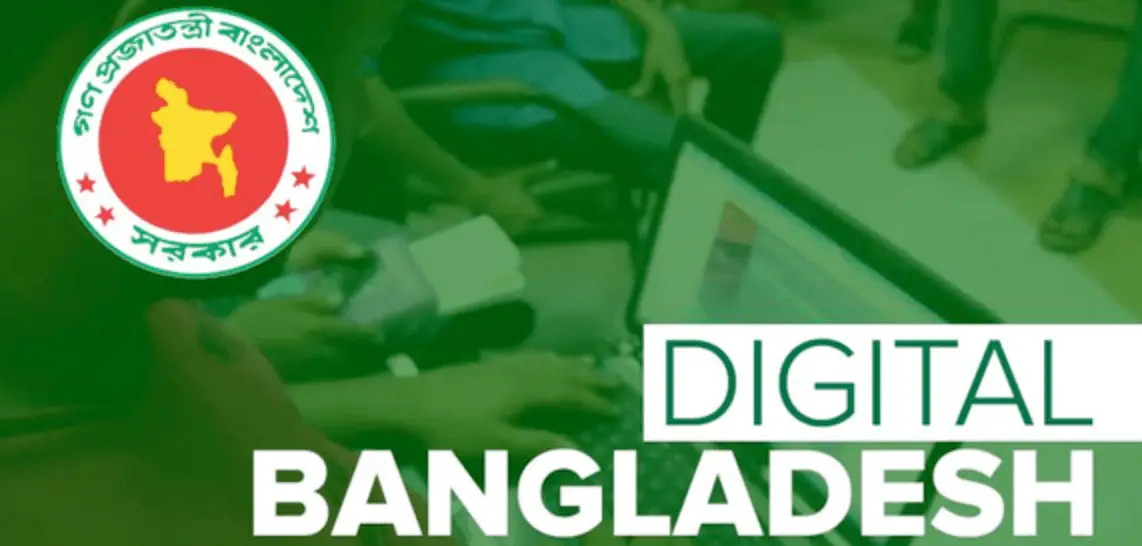Digital Bangladesh: is it feasible or just a dream?
Prologue
Living in a developing country in the 21st century, we are frustrated with many things. As the 21st century emerged, technology revolutionized communication and transportation. The industrial revolution came to its full potential with the advent of technology. Barriers crumbled, borders toppled; the vast Earth is shrunk to a bite-size sphere. They are all happening due to the application of technology. And, they are happening faster than the speed of light!
The world is thriving! But, when the rest of the world is moving ahead with the blessing of technology, the developing countries have other issues like food insecurity, nutrition to solve. As a developing country, besides such issues, Bangladesh is afflicted with natural disasters. But, with indomitable attitude, the nation has been battling such issues and appeared exemplary for other developing countries. Now Bangladesh wants to tame the mighty dragon, technology!
What will happen in 2021?
While we don’t know for sure what the future holds. But, we can use the existing knowledge to make educated guesses. Humans may start colonizing Mars by 2021. The paralyzed will walk by then.
But, for Bangladesh, 2021 is the year when we can fulfill many of our objectives. It’s the year when we will celebrate our 50 years of independence. It’s the year by when we want to become a middle-income country. And, it is the year when we hope to realize Vision 2021.
Vision 2021 is a campaign, an initiative, and a promise. The Government of Bangladesh wants to transform the country into a digitally empowered nation. And, Vision 2021 is the program that is driving the transformation.
Vision 2021 is part of National ICT Policy-2009, which was promulgated with a view to accomplishing middle-income status of the nation by 2021 and by 2041, developed status.
Digital Bangladesh is an initiative that recognizes the strength of digital connectivity and an ICT-based society in order to realize Vision 2021. Bangladesh Government has taken necessary steps to. In order to achieve Vision 2021’s objectives.
As per the initiative, the Bangladesh Government introduced measures to make all information available online. The government believes, in a digital Bangladesh, all tasks, be it official or semi-official, will be performed by digital means.
How the Scenario was before Digital Bangladesh
At the beginning of the 21st century, the Millenials in Bangladesh were frustrated with slow technology advancement. When the developed countries were going ahead with the computer, most of us could barely afford a TV. When the developed countries started using wireless communication, the landline was our prime medium of fast communication.
But, now things have changed! Now we no longer have to rush to the nearest mobile phone center to talk over the phone. Nor do we have to stand in a lengthy queue to submit our electricity bill. And, it’s the movement to digitalize Bangladesh that is changing it all.
What did Digital Bangladesh achieve so far?
There is a multitude of limitations you will face no what the initiative is. Not so long ago, when Bangladesh was a hotspot for corruption, terrorism, and lawlessness. The country still battles such malice. As the venom of corruption spills everywhere and threatens to undermine everything the nation achieved, working toward Vision 2021 is really a daunting task. However, what Bangladesh achieved so far are something to downplay. So, let’s find out what can make you proud and what can give you hope:
- Bangladesh now boasts 12 crores (120 million) mobile subscribers and over 4.3 crores (43 million) Internet subscribers. This huge number of mobile and Internet users are reaping the benefits of digitalization of Bangladesh. With more steps taken to better mobile and the Internet, you can hope to see even large numbers in two or five years.
- Before the Vision 2021 campaign, you had to stand in lengthy, tedious queues to complete the registration process for admission into academic institutions. Now you can easily register to appear in public university admission examination via the Internet. Every year millions of students take part in the fierce competition to enroll in public universities. And, these students come from all across the country. To complete the registration process, you had to travel to the university of interest. Now with registration process being completed online, you have to travel to the university of interest for once.
- The publication day of results of examination is a day full of anxiety and stress. Who would want to go to the institutions to collect results? Now students and guardians can receive results of examinations via an SMS or online result publication sites.
- Now, how’s that for alleviating anxiety?
- Additionally, submission of tax returns, tendering, financial transaction, banking system are being done faster than ever. Thanks to widespread use of digital means!
- If you want to file a complaint with the law enforcement agency, you can do so by just e-mailing the concerned body.
- You can also make payments for electricity, gas or water supply services online.
- Communication is completely revamped in Digital Bangladesh. Remittance makes one of the significant contributions to Bangladesh’s GNP. So, it is important to establish instant communication with people working abroad. And, with the development of Internet infrastructure in Bangladesh, you can easily communicate and video-chat with others living abroad.
- Rural areas are also not behind from enjoying the benefits of Vision 2021. The Government of Bangladesh set up nearly five thousand Union Information Center to deliver information to the rural people. It was such a challenging task. Since the government has achieved establishing them, it will definitely be a boost for Vision 2021.
- Sending a letter through postal service is a thing of the past. And, what about post offices? The Government of Bangladesh had a plan for post offices that were nearly becoming obsolete. It turned them into e-centers and initiated mobile money order and postal cash card services. And, the initiative revamped eight thousand village post offices and five hundred upazila post offices.
- Rural people and city people alike heavily depend on Deputy Commissioner Offices and UNO offices. The government wanted to have them technologically developed. As a result, it introduced many technology-based applications for rendering services.
What do the rankings say about Digital Bangladesh?
Yes, Bangladesh achieved remarkable achievements in ensuring ICT-based services to her citizens. However, numerous indices and rankings put Bangladesh behind many countries as far as the providers of ICT-based services are concerned. The rankings are determined by the indices developed by reputed organizations like the United Nations, International Telecommunication Union, World Economic Forum, etc.
Here are a couple of reports about Bangladesh’s progress:
- Networked Readiness Index – the Networked Readiness Index (NRI) is developed by the World Economic Forum. It uses four sub-indices to determine the impact of ICT on the competitiveness of the countries of the world.
- The four sub-indices the World Economic Forum to evaluate are Environment (business, innovation, political and regulatory), Readiness (infrastructure, digital contents, affordability, skills), Usage (individuals, businesses, and government), and finally the Impact of ICT (economic and social impact).
- The NRI reports that in 2014, Bangladesh dropped five positions below its rank in 2013. The NRI report found Bangladesh is yet to progress on the Environment, Usage and Impact metrics.
- ICT Development Index (IDI) – the index is developed by the International Telecommunications Union (ITU). The index determines the status of ICT-based development. The index ranked Bangladesh 145th in 2013, just overcoming Afghanistan and Myanmar among other South Asian countries.
- E-Government Survey by UN – the only progress Bangladesh made in ICT sector is in E-Governance. As the survey conducted by the United Nations ranks Bangladesh 124th among 193 countries. “This year, Bangladesh has been ranked 124. In 2014, and 2012 Bangladesh was ranked 148 and 150 respectively,” an official of Access to Information (a2i) said.
- Dr Ramiz Uddin, head of result management of the a2i programme, said, “Analysing the survey report, Bangladesh has been progressed massively in the last 2 years. As per E-Government Development Index, Bangladesh also secured 3rd position in South ASIA region. Sri Lanka and India is the top most position in this region.”
What actions should the government take to boost ICT growth?
To become a middle-income country by 2021, Bangladesh has a long way to go. Its track record of growth rather makes people hopeful of achieving the status. Bangladesh showed significant development in many sectors that need to properly manage and nurtured.
To ensure growth, and faster improvement, there’s no alternative to robust investments, development of manpower and increased productivity.
Here are the steps the government can take to realize Vision 2021:
- Technology continuously presents us with updated devices. It paves the way to endless opportunities. But, every technological development must be backed by skilled manpower.
- Or else, the benefits of new technology will never be utilized. So, the government should establish proper training institutes in Bangladesh to make the emerging human capital skilled.
- The digital division existent between rural and urban areas in Bangladesh is worth mentioning. Keeping rural people unaware of technological advances is truly detrimental to the overall ICT development in Bangladesh. So, the government should make digital means available and feasible to rural people.
Download Digital Bangladesh 7th Year Plan
Here is the Table of Contents for Digital Bangladesh Whitepaper:
1 Introduction…………………………………………………………………………………………………………………….1
1.1 Framing Digital Bangladesh for the 7th Five Year Plan (7FYP)………………………………………1
1.2 Objectives and methodology………………………………………………………………………………………3
1.3 Layout …………………………………………………………………………………………………………………….3
2 ICT and Economic Growth……………………………………………………………………………………………….4
2.1 Review of 6FYP’s targets………………………………………………………………………………………….4
2.2 Agendas for 7FYP…………………………………………………………………………………………………..7
6 3 ICT and Education …………………………………………………………………………………………………………..9
3.1 Review of 6FYP’s targets………………………………………………………………………………………….9
3.2 Agendas for 7FYP…………………………………………………………………………………………………..10
4 ICT for Greater Transparency, Good Governance and Improved Public Service Delivery …..1312
4.1 Review of 6FYP……………………………………………………………………………………………………..13
4.2 Agendas for 7FYP…………………………………………………………………………………………………..21
5 Enabling Environment ………………………………………………………………………………………………..3231
5.1 Policy and infrastructure ………………………………………………………………………………………….32
5.2 Agendas for 7FYP……………………………………………………………………………………………….3332
5.3 Designing inclusive partnerships………………………………………………………………………………34
6 Digital Bangladesh and Gender: Data and Discourse Gaps………………………………………………….34
6.1 ICT Policy and gender …………………………………………………………………………………………….35
6.2 Indicators for measuring Digital Bangladesh…………………………………………………………..3635
7 Building a Resilient Digital Bangladesh……………………………………………………………………………36
8 Resource Mobilization: 7FYP………………………………………………………………………………………….38
8.1 Fiscal trends…………………………………………………………………………………………………………..38
8.2 Agendas for 7FYP…………………………………………………………………………………………………..39
9 Conclusion ……………………………………………………………………………………………………………………40
9.1 ICT and Economic Growth…………………………………………………………………………………..4140
9.2 ICT and Education ………………………………………………………………………………………………….41
9.3 ICT for Greater Transparency, Good Governance, and Service Delivery …………………….4241
9.4 Enabling environment………………………………………………………………………………………….4342
References………………………………………………………………………………………………………………………..4544
Annex I: Activities under 6FYP’s………………………………………………………………………………………..4847
Annex II: Indicators for Measuring Digital Bangladesh………………………………………………………….6160
Conclusion – considering our previous status, the progress we made in ICT sector is remarkable. We have to keep in mind the current position of Bangladesh when compared with other nations. We still have a long way to go to realize Vision 2021. The road ahead of us will be bumpy. But, we shouldn’t be discouraged. Above all a safe environment needs to be ensured in order for us to be a prosperous nation.

